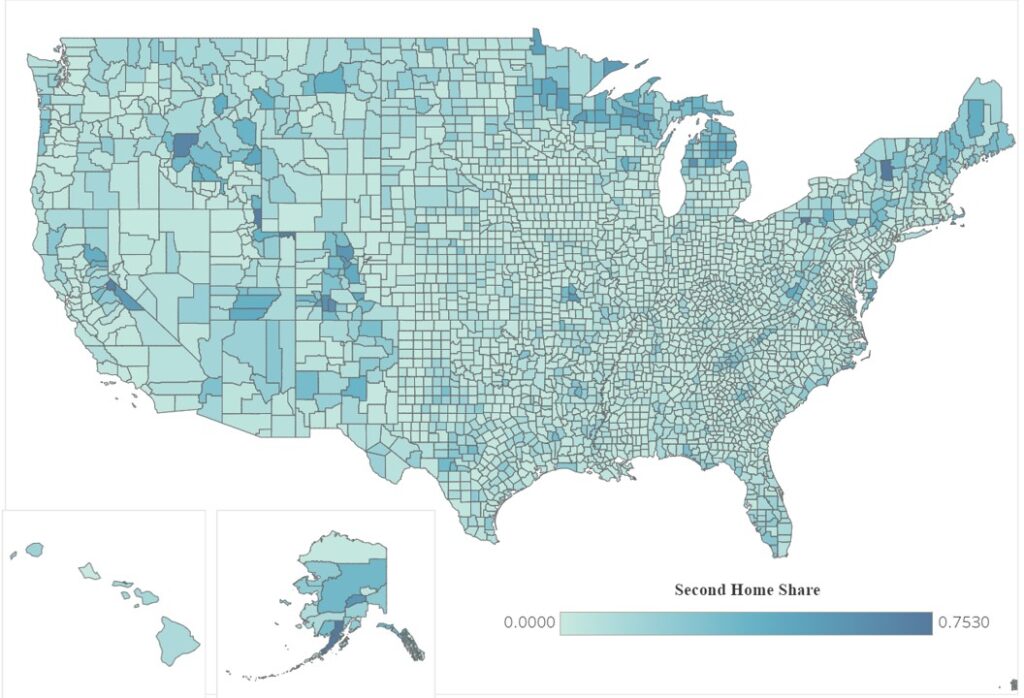In 2022, the total count of second homes was 6.5 million representing 4.6% of the total housing stock, according to NAHB estimates. This reflects a decline from 2020, when the number of second homes stood at 7.15 million.
As of 2022, the state with the largest stock of second homes was Florida (1 million), accounting for 15.3% of all second homes. Wyoming had the smallest stock with approximately 16,320 second homes, . Half of the nation’s second homes can be found in these seven states – Florida, California, New York, Texas, Michigan, North Carolina, Arizona, and Pennsylvania.
In-depth analysis of the county level data shows that the concentration of second homes is not simply restricted to conventional locations like beachfront areas. There were 807 counties spread over 50 states where second homes accounted for at least 10% of the local housing stock. Only Washington D.C. was the exception, reporting a second home share of 1.8%. Across the nation 314 counties, 10% of all counties in the U.S., had at least 20% of housing units that were made up of second homes.
Counties where at least half of their housing stock is second homes were widely spread over in 14 states. Of these counties, four were in Wisconsin, four in Colorado, two in Michigan, Minnesota, Utah, California, Massachusetts, and Pennsylvania, and one county each in Alaska, Idaho, Maryland, Missouri, New Jersey, and New York, These national patterns are mapped below.
Counties with more than 25,000 second homes are mostly located in or near metropolitan areas. The top 10 counties with the most second homes account for around 11.2% of second home stocks, most of which were in Arizona, Florida, California, Massachusetts, and New York. Of the top 10 counties regarding absolute numbers of second homes, only three counties (Lee County, Florida, Barnstable County, Massachusetts, and Collier County, Florida) had more than 20% of their housing stock in second homes.
In terms of methodology, this analysis focuses on the number and location of second homes that would be qualified for the home mortgage interest deduction by individuals using the Census Bureau’s 2022 American Community Survey (ACS). It does not account for homes held primarily for investment or business purposes.
NAHB estimates are based on the definition used for home mortgage interest deduction: a second home is a non-rental property that is not classified as taxpayer’s principal residence. Examples could be: (1) a home that used to be a primary residence due to a move or a period of simultaneous ownership of two homes due to a move; (2) a home under construction for which the eventual homeowner acts as the builder and obtains a construction loan (Treasury regulations permit up to 24 months of interest deductibility for such construction loans); or (3) a non-rental seasonal or vacation residence. However, homes under construction are not included in this analysis because the ACS does not collect data on units under construction.
Discover more from Eye On Housing
Subscribe to get the latest posts sent to your email.
This article was originally published by a eyeonhousing.org . Read the Original article here. .



